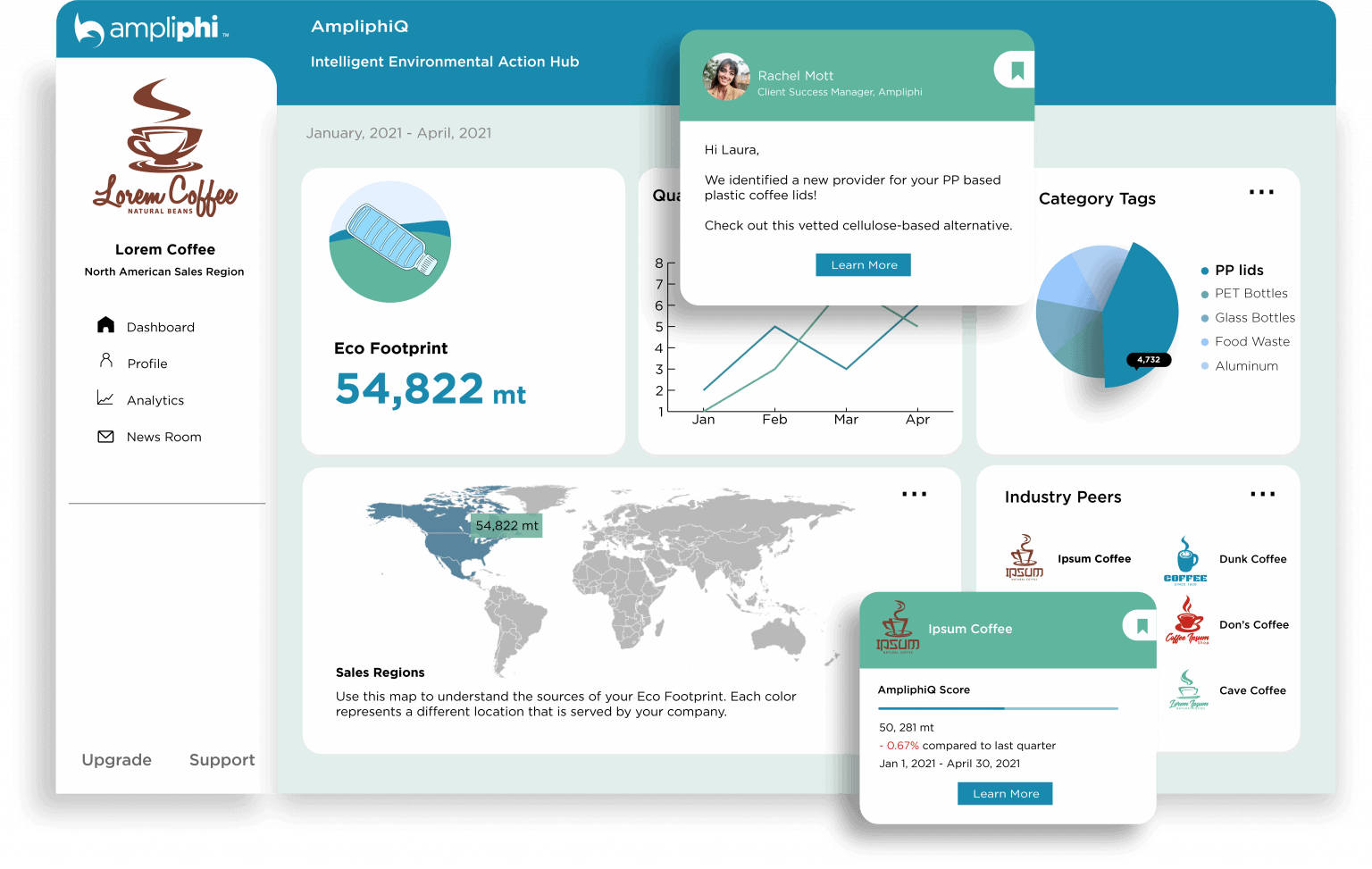A plastic footprint is an indicator used to measure the negative impacts of plastic pollution associated with a company’s operations and supply chain. In layman’s terms, a plastic footprint calculates how much plastic waste a company generates and the associated negative impacts on our environment, society, and economy.
So, why is this new sustainability indicator so important?
Plastics are a ubiquitous group of materials found in almost every supply chain. While they can offer significant advantages over alternatives, plastics’ contribution to climate change and the exponential increase of plastic pollution has created a global call to action.
Especially in the packaging industry, plastic pollution is one of the principal concerns. As a result, consumer brands can particularly benefit from measuring and analyzing their plastic footprint. Measuring a plastic footprint uncovers accurate and actionable information, enabling informed decisions.
A plastic footprint is analyzed through the process of plastic accounting, a subset of environmental accounting. Commonly accepted, the most well-known dimension of environmental accounting is carbon accounting.
Carbon accounting refers to a process used to measure the greenhouse gas emissions associated with a company. And although measuring a carbon footprint is a good first step, it does not capture the full range of negative externalities that can be associated with a company. This is mainly because carbon accounting assumes that all types of plastics are diverted from nature at their end of life (which is clearly not the case).
The case for the packaging industry
With plastic footprint management, the packaging industry can access four major benefits:
- Exceed customer expectations to drive loyalty and market share: Consumers are increasingly pushing their favorite brands to reduce their plastic waste generation. Demonstrating thought leadership through transparency and accountability is rewarded with increased loyalty and cross- and upselling opportunities.
- Access to new and better funding opportunities: While screening for ESG criteria is prevalent in today’s responsible investment strategies, the need to monitor plastic waste generation is rapidly gaining traction. Those leading the transition to a circular economy will likely have access to new and better ways to finance their journey.
- Align your strategy with science: In the last decade, the study of plastic pollution has grown more rapidly than any other topic related to the United Nations Sustainable Development Goals (SDGs). This provides an opportunity to align business strategies with facts rather than opinions, enabling informed decision-making that avoids unintended consequences.
- Make the most of government incentives: As scientific consensus increases, so does the willingness of policymakers to enable positive change. In the meantime, regulators are creating positive incentives and implementing mandatory systems such as extended producer responsibility (EPR). Understanding the policy trajectory will be critical to excelling during the ongoing transition to a circular economy.
How to measure a plastic footprint
Although international standardization for plastic accounting is still nascent, private sector standards are paving the groundwork for holistic adoption. The plastic footprint calculation is informed by four variables:
- Plastic Use: The quantity and composition of plastics used in a system.
- Plastic Waste Generation: The quantity and composition of plastics in a system that reached the end of their lifecycle;
- Plastic Leakage Rate: The proportion of plastic waste that is lost and released to nature during production, consumption, and disposal;
- Ecosystem Impact: The direct and indirect impact of lost and released plastics and associated additives and chemicals on the environment, society, and economy.
In alignment with the Greenhouse Gas Protocol the standard-setting body for carbon footprint accounting, plastic accounting also follows three categories for analysis:
- Tier 1: covers pre-consumer plastic waste whose end of life destinations are influenced by a company’s operations (e.g., plastics used at the warehouse, workplace-related plastics)
- Tier 2: measures post-consumer plastic waste whose end of life destination can only partially be influenced by a company (e.g., product packaging, protective packaging used for shipping directly to the consumer)
- Tier 3: includes all other activities in the supply chain of a company that creates plastic waste (e.g., plastics used for agriculture, primary microplastics)
Start measuring your company’s plastic footprint today
Managing your company’s plastic footprint might sound intimidating, but the benefits far outweigh the costs. Topic experts such as plastic footprint management platforms can help you streamline the process, autopilot plastic action, and help your business cut through the noise.
Let’s not waste precious time — start measuring your company’s plastic footprint today.
Website: https://ampliphi.io/
"Dominic Santschi is a Co-Founder of Ampliphi - an intelligent environmental action platform enabling companies to measure, reduce, and communicate their plastic footprint. Before starting Ampliphi, Dominic worked with a leading plastic credit provider where he spearheaded partnership and business development projects. In this role, he lived in India, the UK, and Switzerland, engaging with myriad multi-stakeholder initiatives such as the US Plastics Pact and the Ocean Plastic Leadership Network. Dominic holds an MSc in Climate Change, Management & Finance from Imperial College London. He also claims to have a closer relationship with packaging in his dustbin than with his neighbours."







